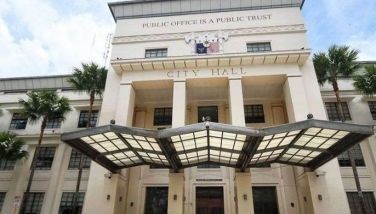Strong aftershocks in Bohol felt in Cebu
CEBU, Philippines - Barely a month after the first year anniversary of the deadly earthquake that struck Bohol last year, four strong aftershocks rocked the island Tuesday night and Wednesday morning, which were also felt in Cebu.
A magnitude 4.6 tremor struck first Tuesday at 9:52 p.m. whose epicenter was traced near Catigbian, Bohol.
Tectonic in origin, the quake was felt at intensity 5 in Catigbian where the epicenter was known and intensity 4 in Tagbilaran City, Antiquerra, Corella, Baclayon, Cortes, Balilihan, Loboc, Jagna, Lila, Sagbayan, and Carmen, all in Bohol island province.
Still in Bohol, intensity 3 was noted in Alburquerque, Sikatuna, Maribojoc, Loon and Talibon while intensity 2 was felt in Dauis, Bohol and Cebu City.
This was followed by a milder magnitude 2.5 shaking at 9:57 p.m. near Balilihan, Bohol reaching intensity 2 in San Isidro and intensity 1 in Lila, both in Bohol.
At 10:52, another one was recorded at magnitude 3.1 in Catigbian and felt at intensity 2 in both Tagbilaran and Lila in Bohol.
At 6:01 a.m. yesterday, a magnitude 3.7 tremor was recorded in Balilihan.
Research specialist Rolando Montanez of the Philippine Institute of Volcanology and Seismology (PHIVOLCS) in Mactan, Cebu said the tremors were considered aftershocks of the deadly magnitude 7.2 earthquake that struck Central Visayas on October 15 last year.
“The minor shaking that we feel is still part of the aftershocks following the strong earthquake in Bohol last year. Basically it has the same source of stress that shook last October 15, 2013,” Montanez said.
He said everyone must remain prepared and vigilant, especially that major earthquakes have been experienced recently in neighboring provinces Negros and Bohol.
“No technology has been developed yet to predict earthquakes. What we can do is continue to be vigilant and armed with the right information,” he stressed.
The correct way to deal with an earthquake and its hazards can be obtained by participating in drills, seminars, lectures and symposium on preparedness and mitigation, he added.
Meanwhile, PHIVOLCS has yet to release the results of studies and assessment on ligaments and faults in Cebu. The research team that conducted the study and assessment is composed of experts from PHIVOLCS central office.
A series of on-ground evaluation, underwater and even aerial surveys have been done to determine the existing and possible novel fault and ligaments in Cebu province thoroughly. — (FREEMAN)
- Latest
























